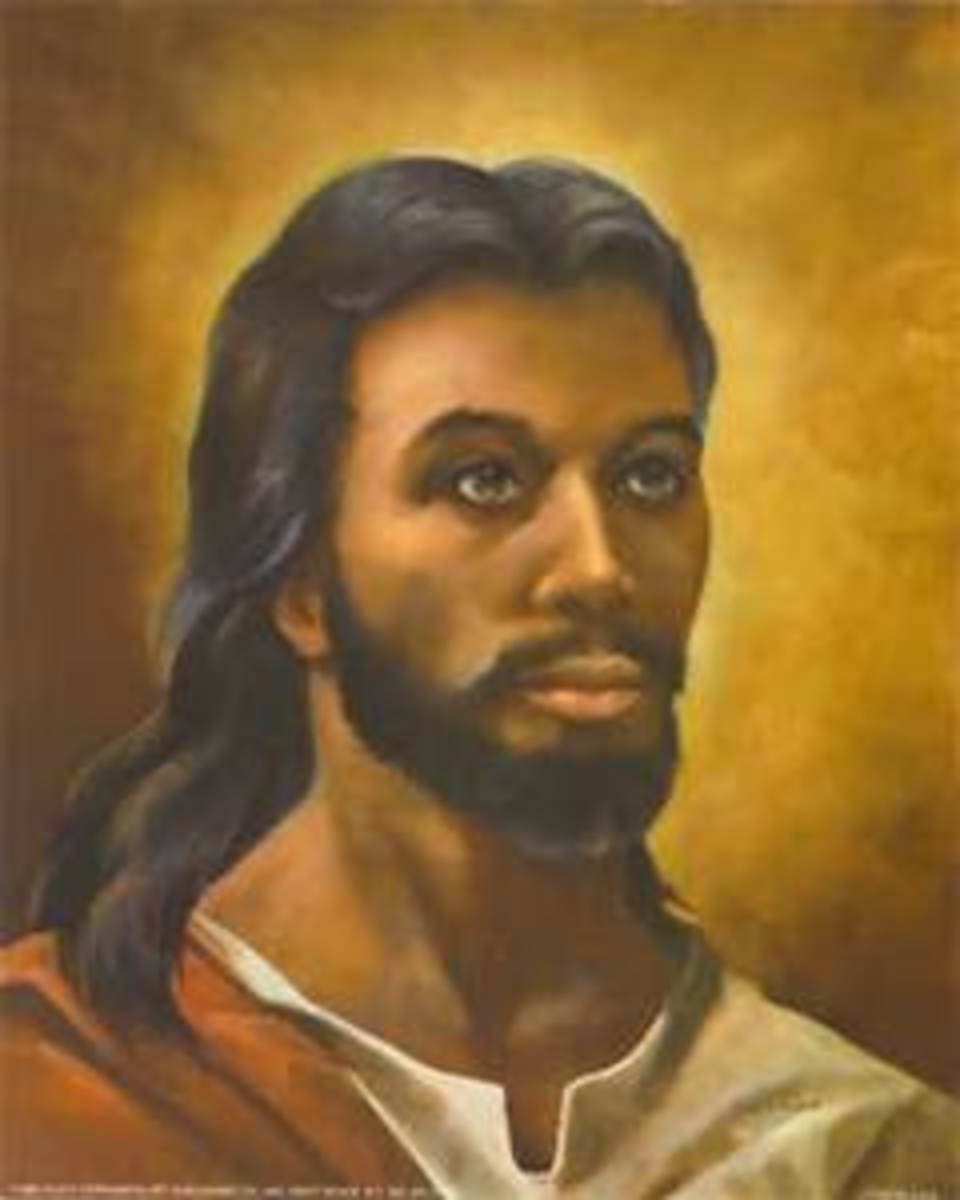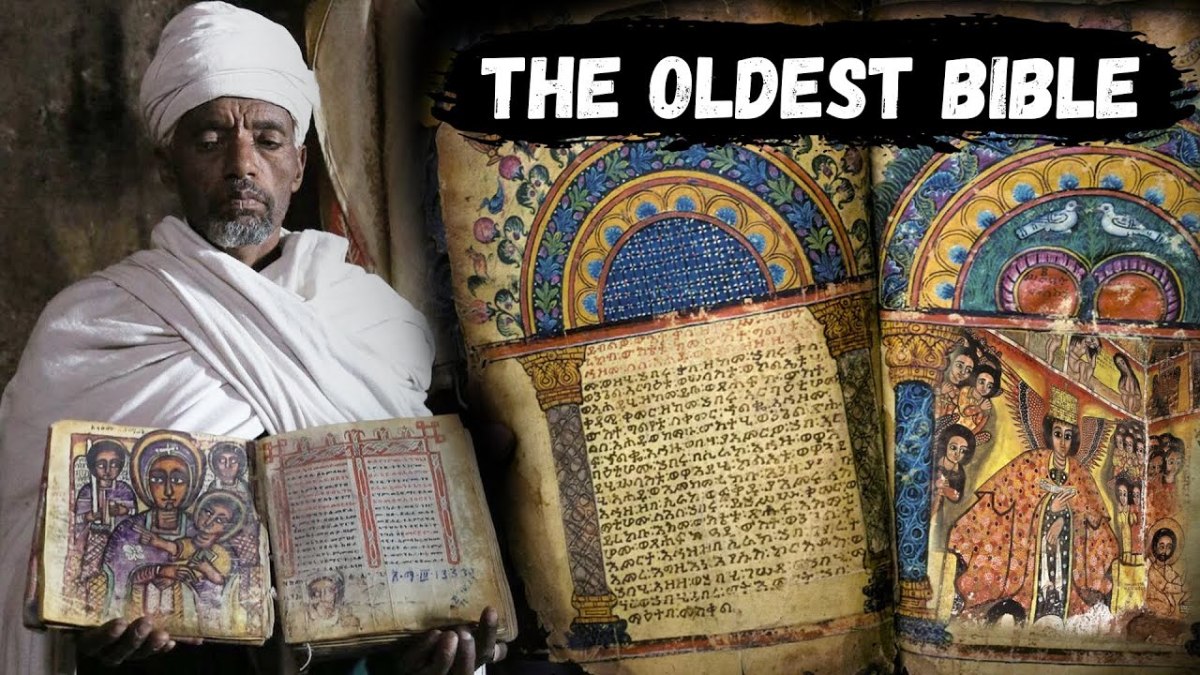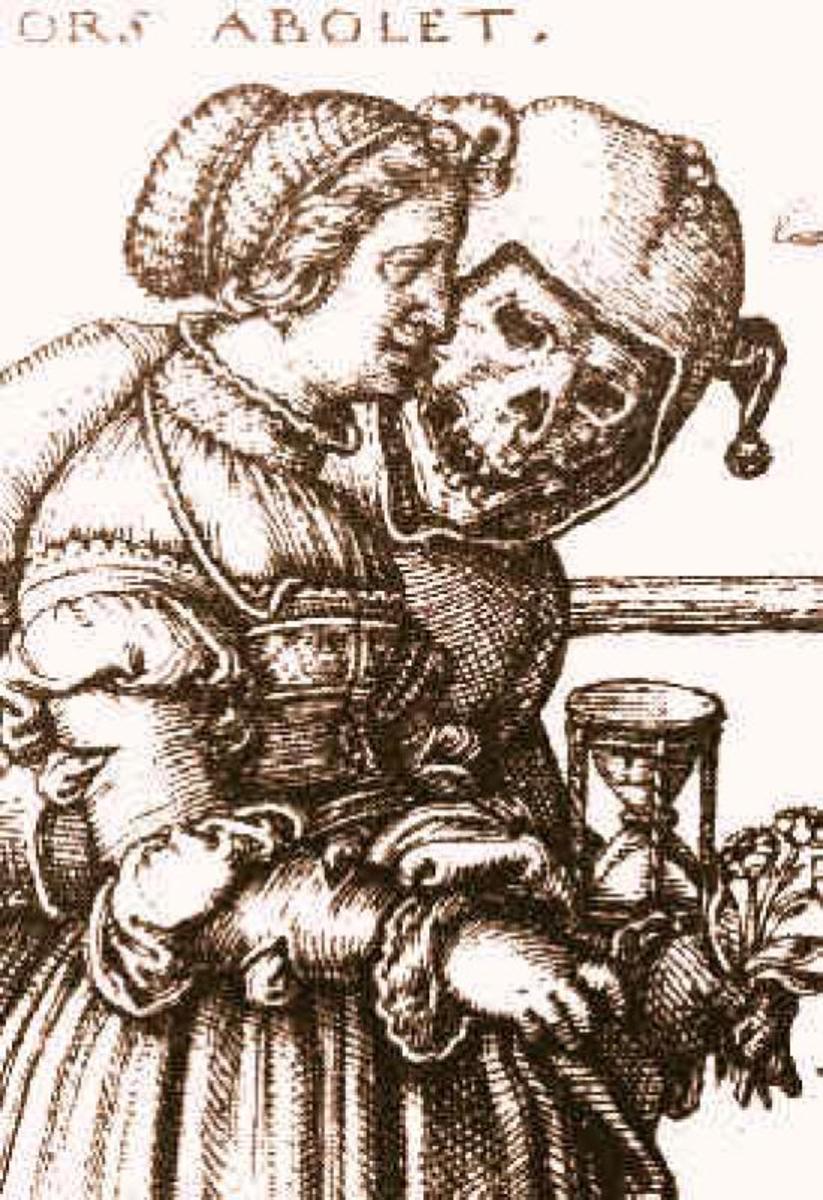Bible: What Does John 11 Teach Us About Jesus, Lazarus, Mary, and Martha?
The Apostle John
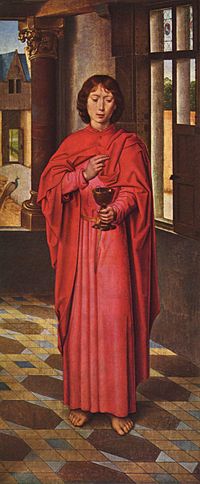
Mary and Martha with Jesus
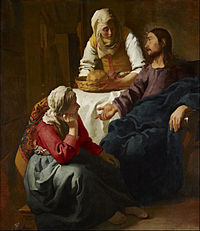
Jesus Visits His Friends
Next, the Apostle John centers his attention upon one family of three siblings with which Jesus had a very loving relationship: that of Lazarus, Mary, and Martha.
At this time, Lazarus had contracted a life-threatening illness (v. 1), and his sisters had sent a message to their Master, asking Him to visit them to heal their brother (v. 3).
[The apostle inserts a parenthetical note of sorts, explaining this Mary’s identity; she had apparently anointed Jesus’ feet in the past, for she does so again after the events of this chapter (v. 2)].
Motivated by His desire that God receive greater glory through a more wonderful miracle (v. 4), Christ stays two days longer where He was (v. 6).
[John inserts another parenthetical statement, a telling one, that shows that Jesus delayed His coming not because of any indifference toward His friends’ plight, but because of His love for them (v. 5).
Even though His decision to wait causes them brief suffering, He follows through with this plan because He knows Lazarus’s raising would redound to a greater glory for God than a “mere” healing would accomplish.]
The Apostle Thomas (Didymus)
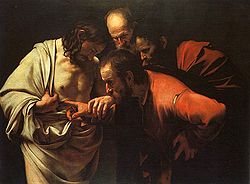
Lazarus is Dead
Two days later, Jesus decides to go into the Judean "lion’s den" again—a choice that meets with apostolic incredulity (v. 8).
Speaking figuratively, Christ argues that either He Himself (“the light of this world”; cf. 9:4) or His Father’s will will keep believers (here, the apostles) from stumbling (vv. 9-10).
[Is He disregarding the potential danger facing Himself, or is He seeking to comfort His disciples with this statement?
Ryrie contends Jesus meant “as long as He was walking in the light of the Father’s will,” He would be safe (New Testament Study Bible, 184).
If the latter is correct, then “the light of this world” does not represent Christ, but the Father’s will.]
After resolving that issue, Jesus reveals His fundamental purpose in returning to Judea: to “wake up” Lazarus (v. 11).
Characteristically, the apostles interpret His metaphorical meaning with wooden-headed literalism; thus, they require the Lord to tell them plainly that Lazarus is dead (vv. 12-14).
If all of them (namely, the twelve and Jesus) had been with Lazarus when he died, then their faith would have been weakened if the Lord had not chosen to heal him.
Jesus is glad that Lazarus’ raising would serve to strengthen their faith in Him (v. 15).
Thomas’ aside to the others indicates that he has completely disregarded or misconstrued Jesus’ words about Lazarus; consequently, he seeks to pass his martyr’s complex on to those around him (v. 16).
[What purpose does John have in identifying Thomas as the Twin (Didymus)]?
Too Late? Never.
view quiz statistics"I Am the Resurrection and the Life"
By the time the thirteen travelers reach Judea and Bethany, Lazarus has already been entombed four days (vv. 17-18).
[What significance, if any, does Jesus’ staying “two more days where He was” (v. 6) have for this context?]
Besides the traditional female mourners, others in the village also seek to comfort the sisters in their grief (v. 19).
When Martha hears about Jesus’ arrival, she does not go into the house to tell Mary, but rushes out to meet Christ (v. 20).
In her abrupt greeting, she seems to chide the Lord for not coming sooner so that He could have prevented Lazarus’s death (v. 21; cf. with Mary’s approach in verse 32).
Yet she still holds out hope that Jesus would act on their behalf (v. 22).
Martha understands only the distant future aspect of His double-edged response, i.e., that Lazarus would rise from the dead on the last day (vv. 23-24).
Christ, as the source of Life, promises spiritual and eternal life to believers, even though they may die physically.
In addition, He exempts those who live physically and believe in Him from experiencing spiritual and eternal death (vv. 25-26).
The Spiritual Condition of Martha
What do you believe was Martha's spiritual condition?
Martha: A Believer?
Probably not knowing what to say to these words, Martha does not answer Jesus’ question as though she believes these truths, but responds with the pat confession of faith in Him as the Christ (v. 27).
Now Martha finds Mary and secretly tells her that the Teacher was calling for her (v. 28).
[Three questions:
(1) Why did she refer to Jesus as “the Teacher,” rather than “the Lord?”;
(2) Why was she secretive in her communications to Mary about Jesus’ coming?;
(3) Why did she say that Jesus was calling for her?
It is difficult to read between the lines, but these are some possible answers:
(1) Martha did not truly believe what she professed;
(2) She wished to keep the meeting between Mary and Jesus private, not wanting everyone in the house rushing out to find Him;
(3) The text is silent about this request.
Now that Martha has had her say, her sister can now visit with Him. Is there “sibling rivalry” here?]
When Mary quickly leaves the house, her comforters, thinking that she is going to the tomb, accompany her to Jesus’ location outside Bethany (vv. 29-31).
Although she expresses the same regret—specifically, that Jesus had delayed His arrival—her attitude toward Christ differs from that of her sister’s (v. 32).
Not only does Mary fall down at His feet, but she also weeps greatly (vv. 32a-33a); apparently, Martha neither falls down nor shows any emotion-- except for a little anger.
Jesus Raises Lazarus From the Tomb
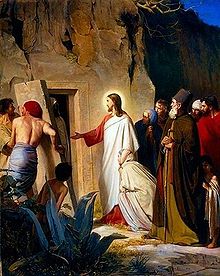
Lazarus Raised to Life
Amid this overwhelming sorrow, Jesus sympathetically requests to see Lazarus’ tomb (vv. 33b-34a).
His tears in verse thirty-five draw two distinct responses from the crowd:
(1) Some of the people acknowledge His great love for His friend (v. 36); and
(2) Others wonder why this Miracle Worker (“this Man, who opened the eyes of the blind”) was not present to prevent Lazarus’ death (the same argument as the sisters) [v. 37].
[The latter group’s question may betray some skepticism regarding Jesus’ motive.
Jesus risked this type of reaction by delaying His coming, but He knew what He was about, having a different, more glorious perspective than the townspeople.]
Still deeply distressed as He approaches Lazarus’s sepulcher —the text records that He “groans within Himself” a second time (cf. v. 33)—, Jesus orders men to remove the stone guarding the grave’s entrance (vv. 38-39a).
Martha objects to this command, thinking that perhaps she would have to enter her brother’s stinking burial place with Jesus (v. 39b).
[She feels that she needed to remind the Lord how long Lazarus has been in the tomb, forgetting to Whom she was talking.]
After mildly rebuking her for her unbelief, Jesus then turns toward the tomb, the men having removed its protective stone, and thanks the Father for hearing His request (vv. 40-41).
[He had been praying silently all along, for the text says nothing about His asking aloud that the Father raise Lazarus through Him.
Every prayer Christ utters the Father hears—a quite astounding, but logical claim.]
Jesus wants the onlookers to believe that the Father has heard His latest request, and that He is the Sent-One of the Father (v. 42).
As the drama reaches its climax, Christ calls forth Lazarus from his grave, and His friend obeys His voice.
After Lazarus exits the tomb wrapped in grave-clothes from head to foot, the Lord commands attendants to unbind him from these constraints (vv. 43-44).
Spiritual Blindness
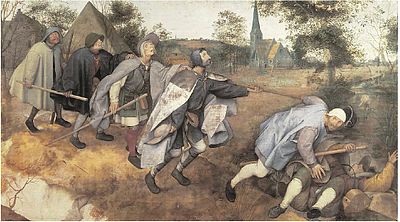
After witnessing this breathtaking miracle, many townspeople in attendance believe in Jesus (v. 45); nevertheless, some observers remain loyal to the Jewish leadership and report this new phenomenon to them (v. 46).
Even though the chief priests and Pharisees acknowledge that Jesus has performed a multitude of signs manifesting His divine authority, they never think twice about trusting in Him as their Messiah; their only concern continues to be the maintenance of their own power.
If they had only believed, they would have had no fear of losing “their place and nation”; in fact, Jesus would have set up His kingdom.
Their remaining in opposition to Jesus arises not only from spiritual blindness, but also from faulty logic.
Did they not understand that the One who has power over life and death would also possess the ability to defeat the combined strength of the entire Roman army (vv. 47-48)?
The High Priest Caiaphas
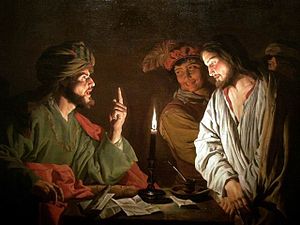
Caiaphas' Providential Prophecy
view quiz statisticsCaiaphas, that year’s high priest, steps into the controversy and determines his brethren’s opinion to be ignorant and shortsighted (vv. 49-50a).
He providentially (and unwittingly) prophesies about the vicarious atonement that Christ would perform on Israel’s behalf (vv. 50b-51).
John the Evangelist expands upon this thought, relating that the merits of Jesus’ death would have universal efficacy for all believers and would provide the basis for God to build His church (v. 52).
Following Caiaphas’ “wisdom,” the Jewish leadership seeks even more to kill Jesus; Christ, however, eludes their grasp (figuratively speaking), and travels to the wilderness of Ephraim to abide there with His disciples (vv. 53-54).
[While Jesus could not be arrested until His time had come (no matter whether He “walked openly among the Jews” or not), He still acted responsibly and reasonably by removing Himself from danger.]
As another Passover approaches, Jews, coming from the country (the same “country” where Jesus lived?) to Jerusalem to purify themselves before the feast, speculate about whether Jesus would attend (vv. 55-56).
In planning Jesus’ arrest, the leadership commands their spies to provide information as to Christ’s whereabouts so that they might take Him into custody (v. 57).
© 2014 glynch1



